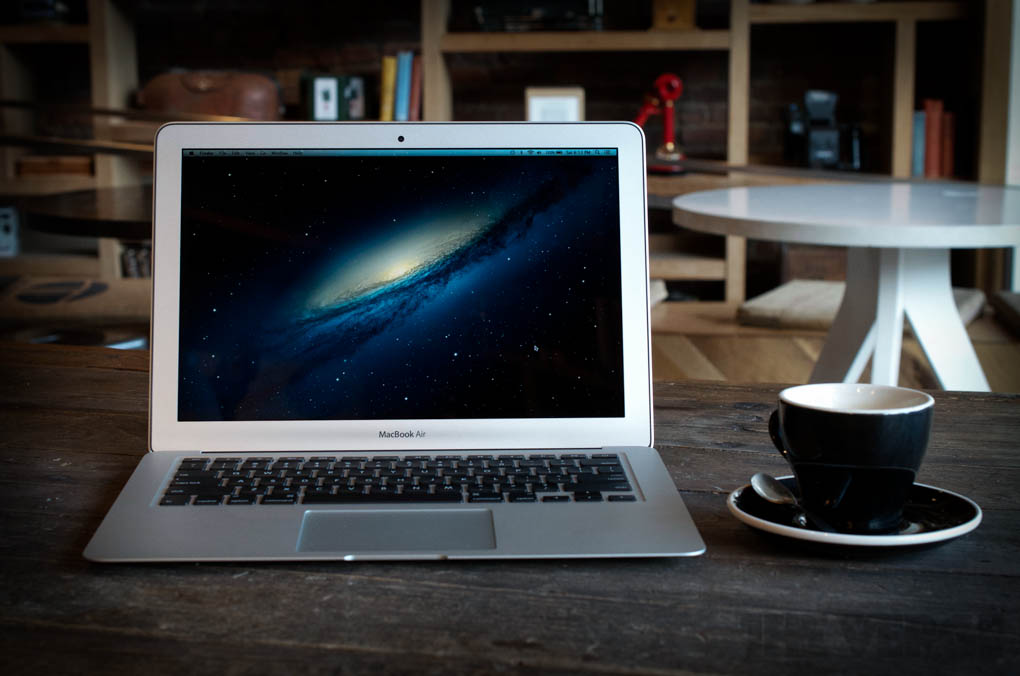Toby’s Estate Coffee in Brooklyn should be my favorite local coffee shop. The Australian company’s first US location is big and bright, with ample seating, great service, and terrific coffee — the ultra-expensive Strada variable-pressure espresso machine behind the bar sees to that. It’s also full of attractive young people hellbent on challenging traditional notions of fashion, beauty, and exactly what constitutes a pair of pants. The entire experience is delightful.
There’s only one problem: there are exactly zero power outlets in the joint.
The lack of power is rumored to be deliberate; a gentle way to keep patrons from lingering all day over laptops while sipping $2.75 Americanos. Sure, you’ll see the occasional laptop owner try and settle in for a few hours, but panic sets in fast — eventually fear drives everyone to make a move, freeing up seats for the next wave of creative-class nomads to try and beat the clock while sucking down fresh cups of joe.
But Apple’s new 13-inch MacBook Air might change Toby’s for good — it’s almost exactly the same externally as last year’s model, but a revised chipset inside offers a claimed 12-hour battery life with improved graphics performance and even faster Wi-Fi speeds if you have a compatible router. In short, Apple’s just taken the best overall laptop on the market and turned it into a declaration of war against coffee shops everywhere.
All day
13 hours and 29 minutes. That’s all you really need to know — that’s how long the new MacBook Air running Safari lasted running The Verge Battery Test, which cycles through a series of websites and images at 65 percent brightness. Run time in Chrome was shorter, at 11 hours and 29 minutes, but both are still ridiculously impressive. In fact, it’s the record for a laptop running our test without an external battery.
13 hours and 29 minutes. That’s really all you need to know.
This insane battery life is enabled by Intel’s new Haswell chips, which will spring up on laptops across the industry in the coming weeks. Apple’s actually managed to outperform Intel’s standard Haswell battery life claims with the new Air; we’ll have to see how Windows machines with the new chips compare.
While Haswell offers dramatic battery life improvements, performance is slightly different story. The base model $1,099 Air I tested has a 1.3GHz Core i5 processor, clocked lower than the previous model’s 1.8GHz chip. Apple says the more efficient Haswell chip should perform about the same, but the benchmarks indicate that it’s the tiniest bit slower — 6,057 in Geekbench vs. 6,197 for the older version. I didn’t notice any difference in real world usage, and I’m happy to take the extremely slight performance hit for more than double the battery life. I suspect most consumers buying a base model laptop will feel the same way. (I do think the 128GB of storage in the base model is a little skimpy — you can get 256GB for $200 more, which feels a little expensive but is probably worth it.)
A slight performance hit for more than double the battery life
Apple does say the new Air should have 40 percent faster graphics, and while you still won’t want to rely on the integrated Intel graphics card for any high-end photo or video work, it’s certainly passable. I played Portal 2 and Half-Life 2: Episode 2 without any issues at native resolution. But the Air has never been a gaming laptop, and you shouldn’t look to the new model to change that.
If you have a brand-new router with 802.11ac support, you’ll find the the Air supports even faster Wi-Fi networking than before — up to three times faster, in fact. Apple is selling two such routers now, the $199 Airport Extreme and the $299 Time Capsule; I didn’t have any units to test with. But expect all new routers to support the standard; the Air will be ready as the world upgrades.

